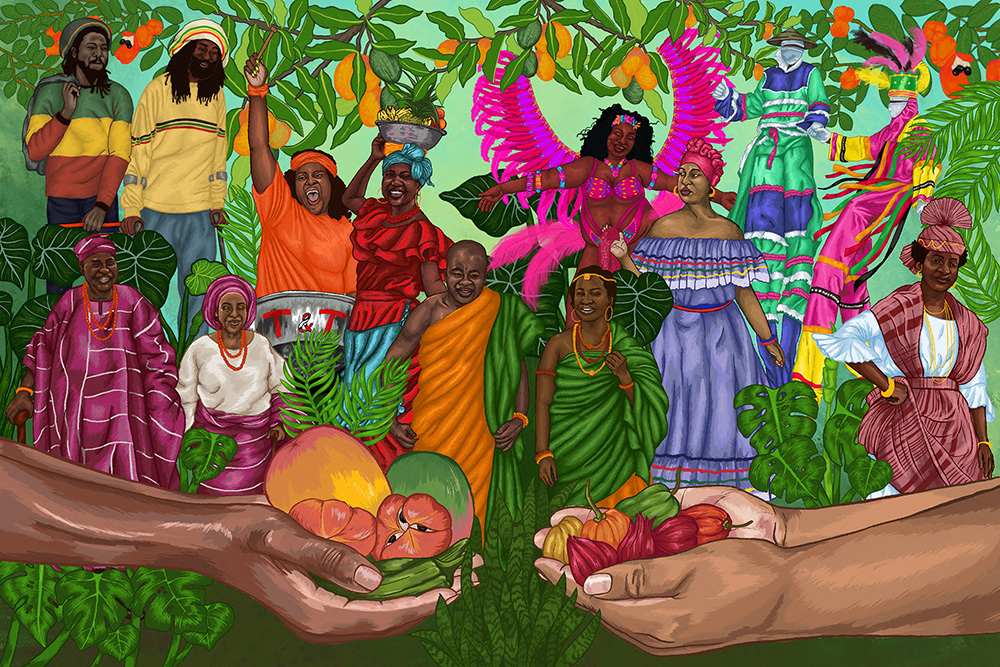African Diaspora

The Rastafarian religious and social group originates from Jamaica in the 1930s. The red, green, and gold on the men’s clothes are considered liberation colours, and are used on many clothing items. Loc’ing your hair and maintaining a vegetarian lifestyle are critical parts of Rastafarian faith.
Steel drums or steelpans were created by enslaved Black folks who transformed discarded oil drums into percussion instruments. These drums became a connection to Africa and the diaspora, and represent resistance to enslavement. Steelpans are the only acoustic musical instruments invented in the 20th century.
This couple wears a traditional hand-woven fabric with intricate patterns made of silk and cotton called Kente cloth. These cloths are worn casually and for important occasions, like weddings. The patterns on Kente cloth have deep spiritual and historical meaning.
Carnival began in Trinidad and Tobago, and spread across the Caribbean and beyond. It was a way for indentured and enslaved people to resist their oppressors by masquerading as them. Today, Carnival is celebrated across the diaspora and masquerading is now called ‘playing mass.’ The costumes can include a mix of Asian, South Asian, Caribbean, and African folklore.
The woman drawn here is wearing a Quadrille or Karabela dress. It is a traditional dress adorned with red and blue lace, coloured after the Haitian flag.
Moko Jumbies are stilt walkers originating from West Africa. Moko Jumbie is believed to ward off evil spirits and can be seen in small family barbecues and big events like Carnival.
The woman here is dressed in a traditional five-piece Creole dress called a douillette. The dress appropriates the style of the French colonizer, but with pattern and flair. Prior to Emancipation, enslaved Black women were forbidden to wear douillettes.
Depicted here are fruits brought from the Caribbean back to Black peoples’ homelands across the African continent, Asia, and Europe—scotch bonnets and sorrel (hibiscus).
Depicted here are fruits brought from Black peoples’ homelands across the African continent to the Caribbean during enslavement—mangoes, ackee, and okra.
These two elders are dressed in traditional Nigerian clothing. The man wears an agbada (loose robe). The woman wears a gele (intricately wrapped head scarf) and iro and buba (wrapped belt and loose blouse).
Do you know of anyone living outside their original homeland?
The word “Diasporic” describes a group of people who now live outside of their original homeland. Due to the transatlantic slave trade, people of African descent are found across the world and can trace their roots back to Africa. However, this does not mean that all Black people identify as African. Many Black folks self-identify by their country of origin. For example, they may call themselves Trinidadian or Senegalese. Others may use hyphens and prefer to be called Afro-Canadian or German-Caribbean. Still others prefer to be called Black. In this resource, we use the term Black because it is inclusive. The B in Black is capitalized because it refers to the people of African descent and their shared experience due to being racialized.
